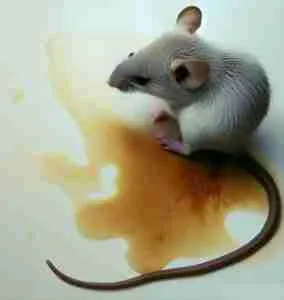Contents
ToggleKey Takeaway:
- Dog-repelling scents can be effective in deterring dogs from pooping in your yard. Using products such as citrus peels, vinegar, or cayenne pepper can create an unpleasant scent that dogs dislike, encouraging them to find another location.
- Putting up a barrier around your yard can physically prevent dogs from entering and pooping. This can be done using fences, hedges, or other forms of landscaping to create a clear boundary between your property and the surrounding area.
- Installing motion-activated lawn sprinklers can startle dogs and deter them from pooping in your yard. These devices use a sensor to detect movement and then release a burst of water, creating an unpleasant experience for dogs and discouraging them from returning.
Introduction: The problem of dogs pooping in your yard and the need to find solutions
Few things can dampen the joy of a freshly manicured yard like the unexpected and unwelcome discovery of a dog’s “gift.” It’s an age-old annoyance that prompts homeowners to hunt for effective deterrents. While an errant poop might seem trivial to some, for property owners, it’s a matter that demands tangible solutions.
From the classics like fences and gates to more organic approaches such as citrus-based repellents or even high-tech sonic devices designed to keep our furry friends at bay, the market brims with inventive measures to keep yards pristine. But barriers and devices only scratch the surface.
Equally vital is the role of community awareness. Encouraging dog owners to embrace their part in this story – by picking up after their pets and considering a leash in public areas – can be a game-changer. It’s not merely about keeping the neighborhood clean; it’s about cultivating respect and mutual consideration.
Interestingly, the Dog Behavior Research Center points out that some breeds have a stronger inclination for territorial markings, underscoring the need for nuanced solutions. By delving deeper into the intricacies of canine behavior, we can adopt measures that align with both our needs and the instincts of our four-legged neighbors.
Using dog-repelling scents

Dogs, with their keen sense of smell, can be remarkably selective about where they choose to relieve themselves. Leveraging this, there are aromatic strategies homeowners can employ to gently steer these furry friends away from their lawns. Let’s dive into the art of scent-driven deterrence:
- Choose the right scents: Select scents that are known to repel dogs, such as citrus, vinegar, or pepper.
- Apply scents strategically: Spray the scents around the perimeter of your yard, focusing on areas where dogs tend to enter or frequent.
- Refresh scents regularly: Reapply the scents every few days to ensure their effectiveness doesn’t diminish over time.
- Consider natural alternatives: If you prefer a more eco-friendly approach, try using natural dog-repelling scents like lavender or eucalyptus.
- Experiment with different scents: Dogs may react differently to various scents, so don’t be afraid to try different options until you find one that works best for your situation.
- Consult with professionals: If you’re unsure about which scents to use or how to apply them, consult with a professional dog trainer or veterinarian for expert advice.
Blending these aromatic solutions with other deterrents, like sturdy fences or the surprise element of motion-activated sprinklers, can create an inviting yard for humans but a less appealing one for dogs.
Golden Tip: As you embark on your aromatic defense, ensure that your efforts remain within your property lines to maintain a harmonious neighborhood. This also aids in avoiding issues like black urine stains.
Putting up a barrier around your yard
Your yard is an extension of your home – a place of relaxation, play, and gatherings. As such, safeguarding it from unwanted canine visitors is not just about aesthetics but also hygiene.
Here’s a concise guide to creating an effective dog-proof barrier for your tranquil space:
- Install a sturdy fence: Erect a durable fence around your yard, using materials like metal or wood. This will provide a physical barrier that prevents dogs from entering and leaving their waste behind.
- Consider a visual deterrent: Use visual barriers, such as shrubs or hedges, to obstruct the view of the yard from the street or neighboring properties. Dogs are less likely to target an area they can’t easily see.
- Utilize scent deterrents: Canines have a powerful sense of smell, so strategically placing deterrents around the perimeter can discourage them from approaching. Consider using natural repellents like citrus peels, vinegar, or ammonia-soaked rags.
- Train your dog and communicate with neighbors: If you have a pet, train them to relieve themselves in a designated area away from your yard. Additionally, politely inform your neighbors about the issue and request their cooperation in preventing their dogs from entering your yard.
In the quest for a pristine yard, the key is combining practicality with aesthetics. Embrace these steps, and you’re well on your way to creating a space that’s free from unwanted surprises and ready for your next outdoor adventure.
Installing motion-activated lawn sprinklers

Embracing motion-sensor lawn sprinklers isn’t just about keeping dogs at bay—it’s about blending modern technology with nature’s rhythm to preserve your yard’s sanctity. Here’s a streamlined guide to getting it right:
- Positioning: Identify strategic locations in your yard where dogs tend to relieve themselves. Consider areas near fences, gates, or commonly used paths. Place the motion-activated sprinklers in these spots.
- Installation: Start by attaching the sprinkler to a garden hose. Ensure that the sprinkler is positioned at an appropriate height to cover the desired area. Use stakes or mounts to secure the sprinkler in place for stability.
- Calibration: Adjust the sensitivity and range settings of the sprinkler according to your needs. Test the sensor by walking around the designated area. Make necessary adjustments to ensure the sprinkler activates when dogs approach.
An added bonus? Your lawn basks in the dual benefit of gentle hydration, staying lush and lovely. This elegant solution wards off dogs without resorting to unsavory methods. Your lawn deserves such intelligent defense.
A Glimpse into History: The dawn of the 2000s saw the ingenious birth of motion-activated lawn sprinklers. Designed initially to counter dogs’ untimely visits, they quickly rose to fame among homeowners, not just for their efficacy but also for their water-conserving brilliance. The journey since then has seen splendid advancements, making them an indispensable yard companion.
Using an ultrasonic-repelling device
Ultrasonic repelling devices stand as a beacon of innovation in keeping yards pristine from unwanted canine intrusions. Dive into the distinctive merits of this cutting-edge tool:
- Sonic Guard: These devices champion the art of subtlety. They emit high-frequency sound waves—wholly imperceptible to human ears—yet surprisingly unsettling for dogs.
- Strategic Deployment: Position the device in a vantage spot, ensuring an encompassing shield for your cherished outdoor spaces.
- Responsive Mechanism: When a curious canine nears, the device springs to action, releasing its ultrasonic waves, urging the dog to reconsider its intended pit stop.
- Safety First: With no reliance on chemicals or obtrusive physical barriers, the device offers a humane solution, respecting both human and canine welfare.
- Maintenance Matters: For peak performance, periodic checks on battery life and alignment are essential. After all, consistency is key.
Beyond these facets, the device’s weatherproof nature offers steadfast protection throughout the seasons. Rain or shine, it remains your yard’s loyal sentinel.
Expert Tip: For a yard that’s truly impregnable, complement the ultrasonic device with solid fencing and savvy dog training. Layered defenses always reign supreme.
Getting a poop bag dispenser
Delving into the world of dog ownership and yard maintenance, the humble poop bag dispenser emerges as an indispensable ally. Let’s explore why this tool should grace every dog lover’s yard:
- Convenience: A poop bag dispenser ensures that waste bags are readily available whenever you need them. With easy access, you can quickly clean up after your furry friend without any hassle, whether it’s in the yard or when needing to clean dog diarrhea from a carpet.
- Hygiene: By using a bag dispenser, you can maintain proper hygiene while handling dog waste. It provides a barrier between your hand and the waste, preventing any direct contact.
- Organization: Keeping a poop bag dispenser in your yard promotes organization. The dispenser keeps the waste bags neatly stored and easily accessible, preventing any mess or confusion.
- Environmental responsibility: Using a dispenser encourages responsible waste disposal. With waste bags readily available, you can promptly clean up after your dog, helping to keep your yard and the environment clean.
Further sweetening the deal, some modern dispensers boast features like odor control. This ensures not just a clean but also a fresh-smelling yard.
A Glimpse Back: The 1990s saw the birth of the modern poop bag dispenser. Crafted in response to rising concerns over dog waste pollution, it’s evolved into a global staple for responsible pet ownership. The dispenser isn’t just a tool; it’s a testament to thoughtful innovation.
Communicating with your neighbor calmly

Navigating tricky waters with neighbors, especially on subjects like dogs leaving behind unwelcome “gifts,” requires tact and understanding. Here’s how to transform a potentially uncomfortable conversation into a collaborative discussion:
- Begin with Empathy: Start the conversation on a positive note. Remember, it’s easier to hear concerns when they’re framed in understanding, rather than accusation.
- State the Facts, not Emotions: Focus on tangible concerns like hygiene and property upkeep. Highlight how pet waste could affect health and even property values. Be precise, yet gentle.
- Propose, Don’t Impose: Instead of just presenting the problem, come armed with feasible solutions. Perhaps introduce the idea of dog waste bags or even brainstorm about creating communal areas for dogs to play and do their business.
- Lend an Ear: As much as you have concerns, your neighbor might have reasons or constraints. Listen actively. Sometimes, understanding where they’re coming from can pave the way to middle ground.
Consider John, a fellow resident who faced a similar challenge. Rather than escalating tensions, he calmly conversed with his neighbor about the doggy dilemma. They exchanged perspectives, discussed environmental impacts, and brainstormed practical solutions. Their outcome? A yard free of unwanted surprises and two neighbors who still share friendly nods, not just a fence.
In the end, it’s all about creating a dialogue that’s built on respect and the shared goal of a harmonious neighborhood. Remember, every solution begins with an open conversation.
Conclusion
Let’s encapsulate these game-changing strategies:
- Barriers and Boundaries: Physical barriers, whether a charming picket fence or a dense hedge, don’t just add aesthetics; they deter wandering dogs.
- Nature’s Deterrents: Who knew that the aromatic scents we adore—like rosemary or citronella—could deter dogs? Plant these in strategic corners for a fragrant solution.
- Embrace Training: By training your canine companion and encouraging others to do the same, you lay the foundation for responsible pet ownership, reducing the likelihood of wandering paws.
- Dedicated Doggy Zones: Designate specific areas in your yard for your dog’s relief, ensuring waste remains confined to one spot.
- Yard Upkeep: A well-tended yard isn’t just about aesthetics. Regular maintenance, like trimming and cleaning, makes your yard less attractive for curious canines. This includes tasks such as cleaning bird poop off concrete.
- Community Cohesion: A problem shared is a problem halved. Engage with neighbors, share your concerns, and rally a community-wide approach to keep all yards in the vicinity pristine.
For those looking for a 360-degree approach, don’t overlook:
- Regular Repellent Application: Being consistent is key. Whether you opt for commercial or natural repellents, maintain a routine for the best results.
- Embrace Technology: Motion-activated devices, be it sprinklers or subtle alarms, can be both efficient and humane in keeping dogs at bay.
- Understand the Canine Psyche: Dogs are territorial creatures. By understanding this instinct and reinforcing your own pet’s domain, you can make interlopers think twice.
In summary, achieving a poop-free yard is a blend of embracing technology, understanding nature, and good old community camaraderie. And remember, while these strategies target varied aspects of canine behavior, the heart of it all lies in responsible pet ownership and community collaboration. Together, we can create cleaner, greener neighborhoods for all.
Five Facts About How to Keep Dogs from Pooping in Your Yard:
- ✅ Dogs are repelled by certain scents such as citrus, rue, citronella, garlic, vinegar, cayenne pepper, chili powder, ammonia, and rubbing alcohol. These scents can be used to deter dogs from entering your yard. (Source: Team Research)
- ✅ Building a tall barrier like a fence or hedge around your yard is an effective way to prevent neighbor’s dogs from entering. Alternatively, creating a painful ground barrier using rough landscaping rocks or mulch can discourage dogs from walking on your yard. (Source: Team Research)
- ✅ Motion-activated lawn sprinklers can startle dogs and deter them from pooping in your yard. These sprinklers are harmless but effective in scaring off dogs and other wildlife. (Source: Team Research)
- ✅ Ultrasonic repelling devices emit high-frequency sounds that only dogs and wildlife can hear. These devices can help keep dogs away from your yard without causing any harm. (Source: Team Research)
- ✅ Installing a poop bag dispenser near the road can encourage your neighbors to pick up after their dogs, reducing the chances of them leaving dog waste in your yard. (Source: Team Research)
FAQs
What smell repels dogs from pooping?
Certain scents are natural deterrents for dogs. Citrus fruits like lemon and orange, vinegar, cayenne pepper, mustard, and rosemary oil are among those smells that can deter dogs from pooping in specific areas. Sprinkling or spraying these scents can discourage them.
What is the best deterrent for dogs?
The best deterrents for dogs are typically scent-based or taste-based repellents. Commercially available repellents, citronella oil, vinegar, or even a mixture of lemon juice and water can be effective. Ultrasonic devices are also an option, emitting sounds that deter dogs without harming them.
How do I stop cats and dogs from pooping in my yard?
To prevent cats and dogs from using your yard as their bathroom, try using natural repellents like coffee grounds, citrus peels, or essential oils like eucalyptus or lemon. Commercial repellents, motion-activated sprinklers, or ultrasonic pet deterrents are also effective options.
Can you control where your dog poops?
Yes, with consistent training, you can teach your dog to poop in a specific area. Start by observing your dog’s behavior and taking them to the desired location when it’s time. Reward them with treats or praise when they poop in the right spot. Over time, they’ll associate that area with the act.
Additional Reading
Here are some articles that provide insights into different outdoor care topics:
- How to Clean Outdoor Rug: An essential guide for homeowners looking to maintain the freshness and cleanliness of their outdoor rugs. Learn the best practices and solutions for effective rug care.
- How to Get Rid of Ground Moles: Ground moles can be a nuisance in gardens and yards. Discover techniques and remedies to ensure your lawn remains free from these underground invaders.
- Plants That Repel Ticks: While ticks may not be the primary concern, they are pests that can create health issues. Learn about the plants that can act as natural deterrents to these blood-sucking creatures.
- Fast-Growing Trees for Privacy: If privacy is a concern, consider introducing fast-growing trees in your yard. This article guides you through the best trees that offer both beauty and seclusion.
- How to Connect Natural Gas Line to Grill: For those who love barbecuing, this article provides a step-by-step guide on setting up a natural gas line for your grill. Safety and precision are key!























































